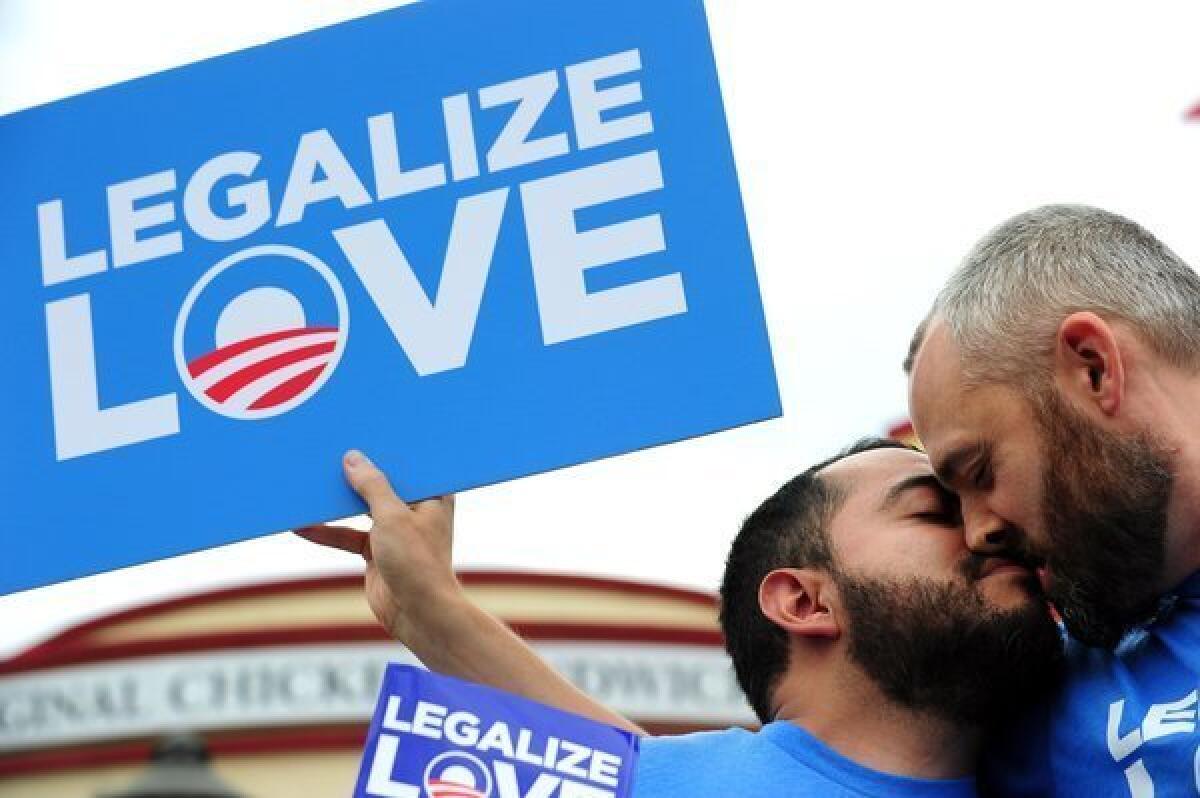No more ‘homophobia’? AP raises the question

- Share via
The recent run of states approving same-sex marriage might prompt a journalist to declare the retreat of homophobia.
But that description probably wouldn’t pass muster with the many editors who use the Associated Press Style Book as the Bible of their working lives.
The wire service’s online style book recently recommended against the use of “phobia” in “political and social contexts.” That means terms like “homophobia” and “Islamophobia” will become rarer in the many publications that operate under AP style.
The change has set off a spirited debate among journalists. Some believe that the “phobia” words are imprecise, presuming journalists can intuit their subjects’ mental states. They welcome limiting the use of such terms. Others charge that restricting “homophobia,” in particular, forces journalists to paper over real discrimination with language that is less frank.
AP Deputy Standards Editor Dave Minthorn told Politico that “homophobia” is often “off the mark” as a descriptor. “It’s ascribing a mental disability to someone, and suggests a knowledge that we don’t have,” Minthorn said. “It seems inaccurate. Instead, we would use something more neutral: anti-gay, or some such, if we had reason to believe that was the case.”
TIMELINE: Gay marriage through the years
The president of the National Lesbian and Gay Journalists Assn. told the Poynter Institute — a school for professional journalists — that “homophobia” was not the best way to describe those taking anti-gay actions. President Michael Triplett said: “Use ‘LGBT rights opponents’ or a similar phrase instead of ‘homophobes’ when describing people who disagree with LGBT rights activism.”
Others, however, argued sharply against restricting the use of “homophobia,” saying it did not have to be read in its most limited, clinical, definition. Baltimore Sun language authority John E. McIntyre called the AP’s stance “reasoned, principled, and wrong-headed.” In an interview with Poynter, McIntyre added: “Homophobia gets used because it is useful in describing an identifiable phenomenon.”
The Guardian’s Patrick Strudwick similarly held that the termed anti-gay behavior is “without exception, at least partly fueled by fear.” No need for qualification or deep inquiry into each subject’s state of mind.
Like with a lot of style and usage rules in journalism, it’s hard to generalize about how this one should be applied. A political libertarian who opposes government programs to hand out condoms (or any other health-related products) might stridently be labeled a “homophobe.” But “public health funding opponent” would be fairer, unless there were some good reason to think the political motivations emanated from a darker place.
A thug who repeatedly attacks gay or lesbian people, or questions their humanity, on the other hand, would seem well-suited for the term “homophobe.” Though an editor still might argue for the plainer “anti-gay.” And then editor and reporter would have to hash it out.
Style books sometimes appear to draw black and white lines, but they’re most effective when they help writers and editors frame a thoughtful discussion about how to most precisely define the human condition.
Follow Politics Now on Twitter and Facebook
More to Read
Get the L.A. Times Politics newsletter
Deeply reported insights into legislation, politics and policy from Sacramento, Washington and beyond. In your inbox twice per week.
You may occasionally receive promotional content from the Los Angeles Times.











